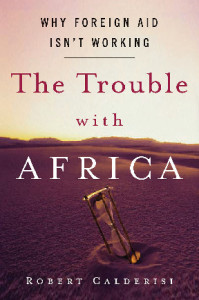|
Reviewed by Dr. Donovan C. Chau, Assistant Professor of Political Science at California State University, San Bernardino In recent years, the spread of radical Islam in African nations has made the continent a major front in the global war on terrorism. To combat this threat, the U.S. Department of Defense is establishing a new U.S. Africa Command (AFRICOM) to unify, not only defense efforts on the continent, but the nations humanitarian efforts in Africa as well. Once at full operating capability, AFRICOM will become a focal point for aid and assistance to African nations. Significantly, a central component of AFRICOM’s strategy will be targeting the so-called root causes of terrorism – poverty, poor education, and inadequate health services. This grassroots approach will use development, or humanitarian aid and assistance, to influence local populations and prevent future terrorism. Noble as these operations may be, the African continent remains misperceived or altogether misunderstood to most Americans. Therefore, Canadian Robert Calderisi’s book, The Trouble with Africa: Why Foreign Aid Isn’t Working, is a useful corrective. The Trouble with Africa is a personal essay by an individual with thirty years of international development experience, particularly in Africa. Calderisi began his career working for the Canadian government, moving from finance to development, then ultimately to the High Commission in Dar es Salaam, Tanzania. From there, he moved to the world of intergovernmental organizations, first the Organization for Economic Cooperation and Development, then the World Bank where he spent the remainder of his career rising to senior levels. Intended for the general reader, The Trouble with Africa is straightforward and organized into three main parts. The first part examines Africa’s historical influences as well as its culture and values. Next is a series of first-hand accounts around Africa. The book concludes with ten recommendations to change Africa for the better. Throughout, Calderisi’s central thesis is: “Africa needs new leaders, ideas, approaches, and technologies much more than it needs money,” and “aid is slowing the process of political change in Africa.” Calderisi offers valuable insight into the African landscape which, in turn, may be applied to the war on terrorism. For one, he debunks some enduring myths about Africa. For example, much has been said about the legacy of colonialism and the slave trade on the continent. Rather than pointing the finger at white Europeans, as is often the case, Calderisi notes that colonialism actually introduced “new technologies, habits, ideas, and education” while the slave trade was “abetted by powerful people in Africa.” Related, he also discusses the issue of racism which is “alive and well within Africa.” Thus, he places conventional wisdom on its head. In addition to debunking myths, Calderisi opens curtains to realities in Africa today. The majority of Africa’s leaders, for example, are described as complacent, petty, and egotistical. “Corruption is so endemic” in Africa; it has become rooted in societies and limits everyday living. Although Africans are “caught in a spiral of pride, anger, poverty, and self-pity,” Calderisi reminds us that the continent’s people are “rich in talents, resources, and tradition.” Calderisi’s personal vignettes demonstrate the ingenuity, intelligence, and abilities of the ordinary African, who are “hounded and blocked by their so-called leaders.” Logically, the book concludes by asking what should be done, given the fundamental problems and realities in Africa. The recommendations emphasize domestic over foreign solutions. Domestically, Calderisi urges for dramatic political and social change in Africa, which is largely in the hands of Africans themselves. In addition to the need for free and fair elections and a free press, African nations should create better awareness through education, tackle the corrosive effects of corruption, and create independent government watchdog organizations to make governments accountable to the people. As for external assistance, Calderisi believes regional infrastructure projects should be promoted and the entire foreign aid approach should be revamped: decrease the amount dramatically, focus aid by rewarding responsible governments only, and unify the bureaucracies of the international development community. Though contrarian, Calderisi’s recommendations to fix Africa are directed at practical solutions. Two criticisms may be found in the book’s firsthand accounts. Calderisi discusses Tanzania and its founding leader Julius Nyerere with much respect and admiration, particularly because of Nyerere’s self-reliant approach. Yet, from its founding, Tanzania received substantive external assistance from the People’s Republic of China; no mention was made of this. Calderisi’s experiences working directly with the Chad-Cameroon oil pipeline comes off as prejudiced. He gives Chad’s authoritarian president, Idriss Deby, the benefit of the doubt in his use of the pipeline’s signing bonus, which was eventually used to purchase military equipment rather than enhance citizens’ living conditions. Critiques aside, The Trouble with Africa is informative for both civilian and military leaders. It is written with clarity and conviction, both essential for success in the war on terrorism in Africa. |


 The Trouble with Africa: Why Foreign Aid Isn’t Working
The Trouble with Africa: Why Foreign Aid Isn’t Working